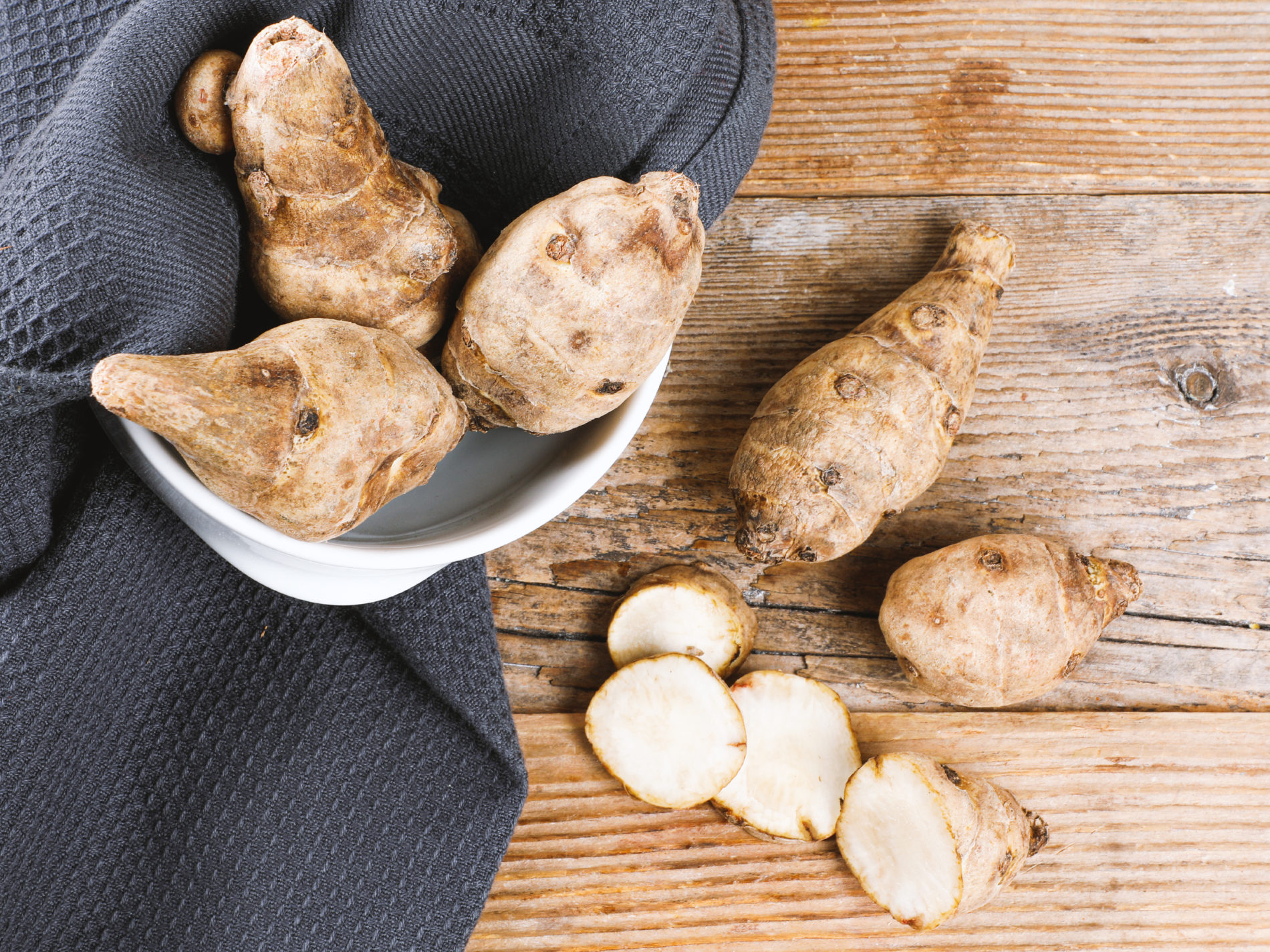First thing you need to learn about Jerusalem artichoke is that this tuber has absolutely no connection to Israel and it is not a type of artichoke. Nice starting point to discuss the inscrutable paths of the etymology and plant scientific classification.
Another name of Helianthus tuberosus is sunchoke or earth apple. It’s a species of sunflower. When the plant blooms its yellow flowers resemble the latter. It’s great that not only does it looks pretty, it also taste nice. At least wasps love sunchokes.
The ‘Jerusalem’ origin part though is uncertain. Though there are two appealing theories. The first is connected to the Puritans – coming to the New World they wanted to build a new strong Jerusalem, spiritually speaking, and they gave the plant that name. The second is connected with Italians. They called the tuber ‘girasole’, in connection with its familial relationship to the sunflower. When English speakers hears ‘girasole’ they might have corrupted the word to the ‘Jerusalem’ – the word they knew far better.
In other languages (Russian, Spanish, French, Italian) sunchoke is called ‘topinambour’. This word is derived from the language of the Tupi people, indigenous to Brazil. The funny thing is that they didn’t cultivate sunchokes, but Europeans didn’t pay much attention to that when they needed to make up a new name for a new plant from America.
But what on Earth is this thing after all? It’s a woody-looking tuberous plant with pale brown skin which makes it look like ginger. But on the inside it’s creamy like potato (be sure that sunchokes are also called Canada potato) and crunchy like apple (hence the ‘earth apple’). It has a mild nutty sweet flavor that one French explorer once described as having a resemblance to the taste of an artichoke. It’s exactly when Jerusalem artichoke got its second part of the erroneous name.
Sunchokes are great in many applications we typically associate with potatoes or carrots. Try slicing, parboiling and then roasting them in 220C / 420F oven until soft and tender. Don’t forget salt and pepper. That would be enough for the first date.











What do you think?